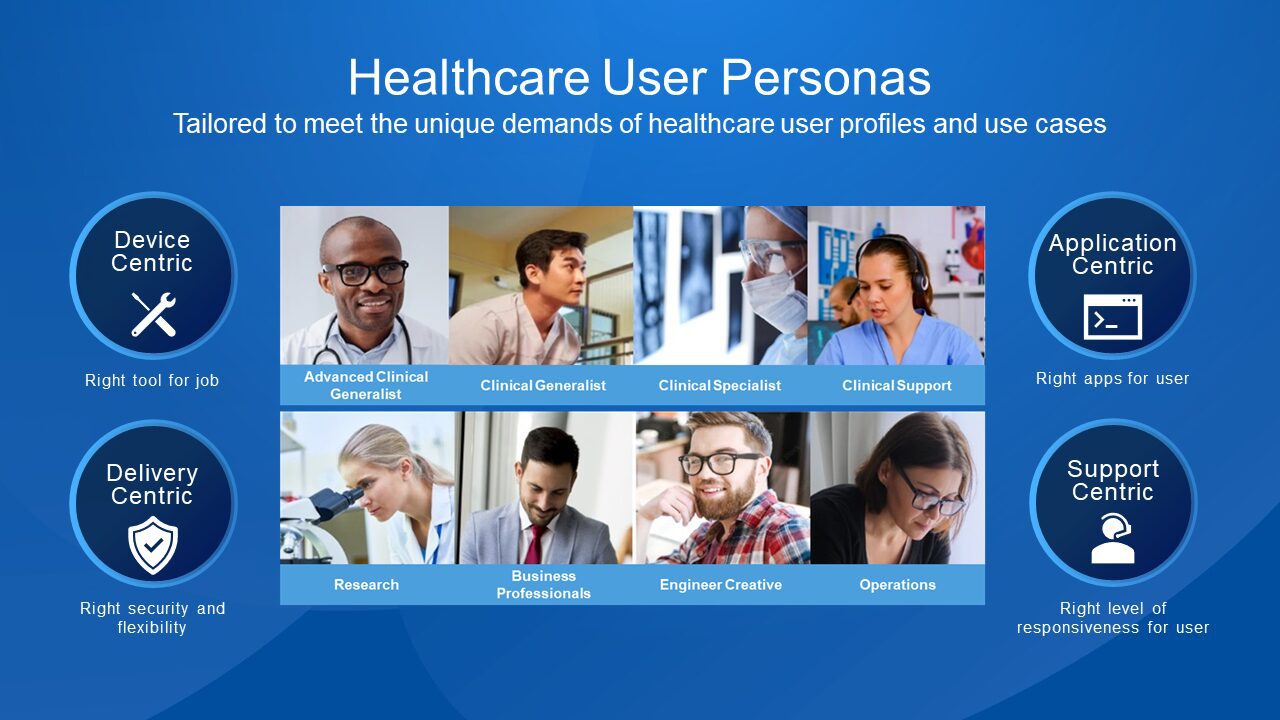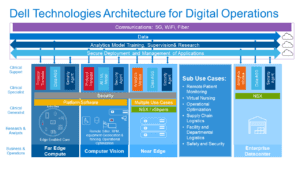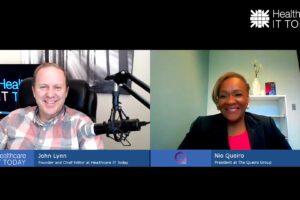The following is a guest article by Jeff Dymond, CTO for Manufacturing at Dell Technologies, and Steve Lazer, Global Healthcare & Life Sciences CTO at Dell Technologies.
Overview
According to IDC (2020 Market Insights Report), by 2023, 60% of deployed infrastructure will be at the edge of the network – up from 10% in 2020. The number of applications running at the edge will increase 300%. One of the top vertical markets set to take advantage of this trend is the healthcare industry, with a broad range of use cases across the value chain, including:
- Point-of-care management and monitoring
- Chronic disease management
- Remote assisted living
- Virtual Nursing
- Wellness and preventative care
- Drug management
- Healthcare operations and logistics
With diverse global operations spanning every major stage of the healthcare supply chain, healthcare companies have enormous potential to leverage edge intelligence. For example, using analytics at the edge, healthcare providers can enhance patient outcomes, increase operational efficiency and resilience, and improve safety and security, while being agile enough to meet new healthcare demands and sustainability goals.
Digital transformation presents a unique opportunity for healthcare providers to contemplate not only how patient care and operations can be transformed and optimized, but also how the potential of edge technology allows them to develop novel approaches to optimizing the healthcare supply chain.
Persona-Based Data Centricity
Persona-Based Data Centricity is key to ensuring that the right data can be provided at the right time, visualized in the appropriate way, and delivered to an appropriate device. This approach involves understanding the data needs of different personas, including clinicians, researchers, and support staff. Focusing on the data needs of these different personas is key to understanding how workloads and data should be distributed and where data analytics should be performed. As organizations look to deploy ever increasing amounts of intelligent automation, artificial intelligence, IoT, edge computing, digital twins, and many other technologies, it is critical to remember that the end users are caregivers and patients.
The infographic below gives an example of eight different healthcare personas – each of whom are working on a common set of assets, but each needs their own way of visualizing (often the same) data and with different tolerances for availability, latency, data fidelity, and computational capability.

Focusing on the data needs of the different personas is key to understanding how workloads and data should be distributed and where data analytics should be performed. We have compiled best practices for several of these use cases based on what we see in our healthcare customer facilities and can put together pilots to validate how a new technology can improve clinical workflows in your facility.
Dell Technologies’ Infrastructure and Partners for Healthcare
As the healthcare and life sciences industry continues its digital transformation, the goal is for improved patient outcomes, reduced costs, and enhanced operational efficiency. A common architectural ecosystem for Edge solutions is essential to support these goals. Dell Technologies offers key technology practices and capabilities that enable digital transformation at the edge.

Key Technology Practices and Capabilities from Dell Technologies that Enable Digital Transformation at the Edge
The digital transformation journey in your company uses several types of technology, from collecting data in edge compute devices to your cloud strategy. Below are just some of the technology and practices that enable digital transformation:
- Identifying the right data and collecting it at the right resolution for optimized business and clinical processes, creating actionable information
- Leveraging edge data for edge analytics and innovative use cases without the need for building complex technology stacks
- Implementing new processes rapidly through agile application development, low code methods, and container-based management
- Developing new and enhanced therapies with Digital Twin technology for personalized treatment methodologies
Healthcare and life science organizations are increasingly the subject of malware/ransomware attacks. Data privacy and security need to be a primary focus when generating and storing edge data, not an afterthought. Utilizing root of trust, secure supply chains and zero trust processing can enhance these capabilities in the healthcare technology infrastructure.
Healthcare is typically saddled by a litany of aging applications. Many of these applications are built upon a monolithic code base and data store. The monolithic applications can create challenges from a sustainability, availability, and performance perspective. As healthcare moves forward in time and begins to develop new applications, they should be developed utilizing agile methods to support site resiliency engineering or SRE. This will allow applications to achieve the resiliency of cloud-based delivery models whether public, private, hybrid or co-located. To facilitate independent updates to any layer of the stack, such as application functions, services, or OS security, healthcare institutions should utilize microservices in combination with agile application development processes and low code methods. Building an agile distributed Edge architecture that includes hardware, software and orchestrated workflows provide the responsiveness needed to attain agreed-upon business outcomes. This approach allows health technologies to focus more on the value delivered by modern healthcare Edge use cases, and less on building the Internet of Medical Things (IoMT) stack of technologies to make it work. Once the right data has been collected at the right resolution, it needs to be curated into business or clinical intelligence and actionable information. Due to the sheer volume of additional Edge data points, Artificial Intelligence (AI) is an extremely valuable tool that can be used to glean new insights. AI is a powerful tool in healthcare, and it can be used at the Edge for cognitive data analytics to reduce unexpected outcomes. Predictive analytics can identify when potential incidents will occur, enabling new levels of agility.
Conclusions
Successful companies that are navigating the digital transformation journey have developed a program of multiple projects that is based on solid ROI benefit numbers and have the fortitude to succeed.
Healthcare and life sciences organizations face persistent barriers to transformation, including integration challenges, security concerns, lack of budget and resources. The healthcare industry has a unique opportunity to leverage edge intelligence to help address these opportunities.
Dell Technologies’ scalable, secure, and reliable architecture limits the risk inherent to integrating data across the enterprise. These solutions will help healthcare and life sciences organizations provide better patient outcomes and control costs with solutions that deliver access to near real-time patient insight. Additional benefits include developing new organizational structures, coordinating clinical workflows, and providing analytical tools for better decision-making. Combining the right processes, applications, and services with AI-enabled Edge technologies will allow care providers to unlock the full potential of Edge intelligence to improve patient outcomes, reduce costs, and drive innovation.
Dell Technologies has extensive experience in digital transformation programs with multiple healthcare and Life Science organizations around the world. Dell Technologies consultants bring experience from cloud architecture, machine learning, extended reality, change management to artificial intelligence and manufacturing execution all based on financial benefits to the company. Engage a partner who has successfully guided hundreds of other organizations through digital transformation that has planned and implemented this type of program.
 About Jeff Dymond
About Jeff Dymond
Jeff is the Global Industries CTO for Manufacturing at Dell Technologies. He brings over 30 years of experience in automation and the hardware/software market. Jeff applies OT and IT knowledge to develop IoT use cases and architectures from the field to the cloud. He creates solutions by looking at the business and then applying the solution in the industry specific context that enables the value proposition. He has consistently led companies to re-focus on the value of their solutions combined with their business problem that enables them to understand and sustain their competitive advantage. Jeff is part of a team that consistently delivers solutions that offer business outcomes, the stability, security, scalability and repeatability needed for every smart manufacturing initiative.
 About Steve Lazer
About Steve Lazer
Steve is the Global Healthcare and Life Sciences CTO for Dell Technologies. He brings robust Health IT competencies and management strategies for healthcare organizations ensuring successful Healthcare IT solution delivery. He drives technical strategy and solutions development for Healthcare and ISV technical relationships including joint solutions R&D, technical advisory, and technical escalation processes. Steve is part of one of the strongest healthcare practices in the technology industry with a heritage of more than 30 years building solutions around the globe with clinical ISV partners and providing essential technology infrastructure to hospitals of all sizes.
Dell Technologies is a proud sponsor of Healthcare Scene.













